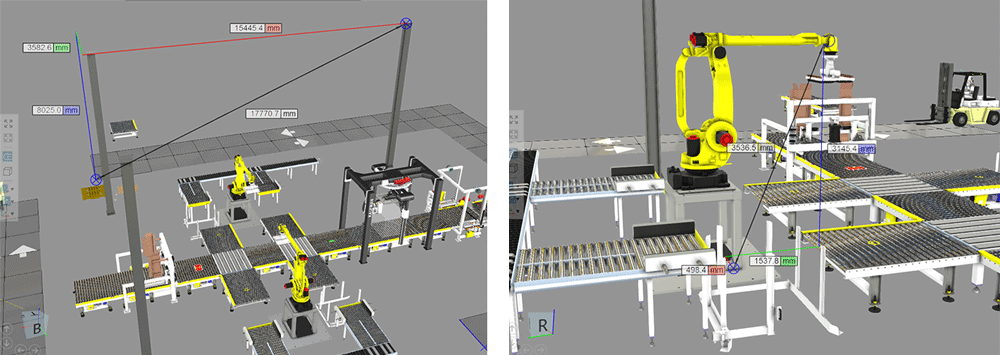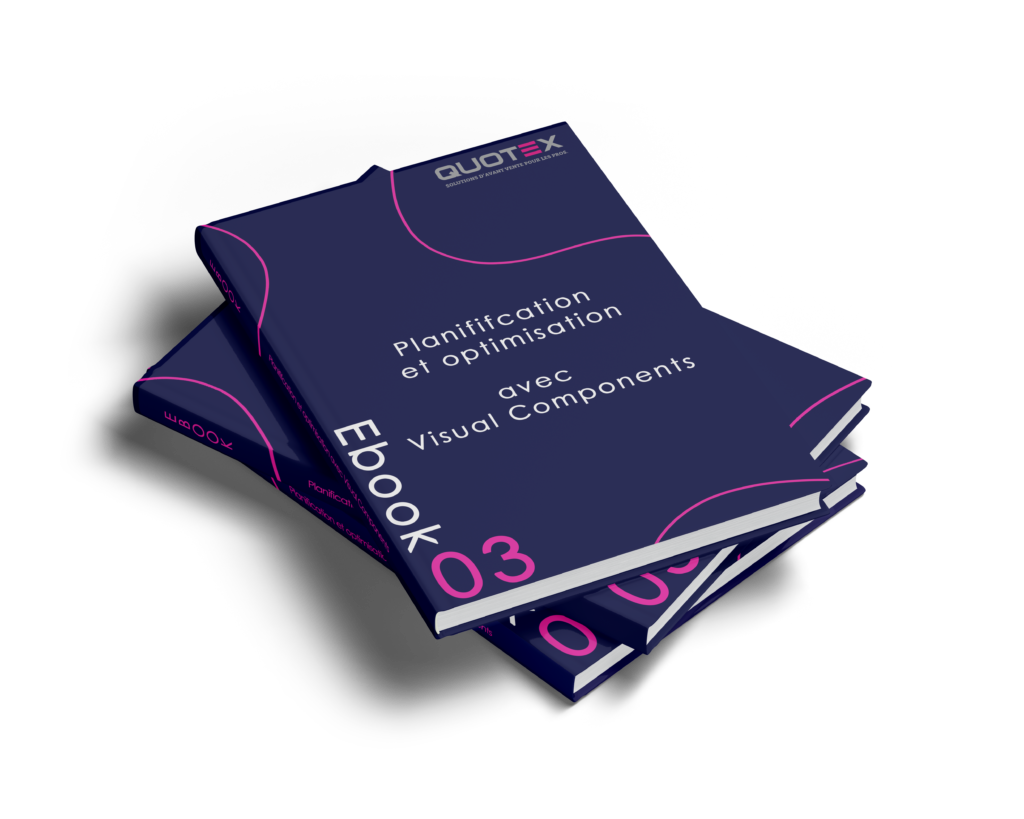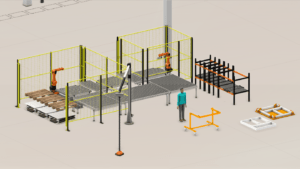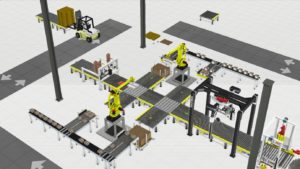How to avoid making costly mistakes when planning a new production line? By using production systems simulation software! 3D manufacturing simulation technology brings spreadsheets to life and highlights real-world interactions while providing a unique way for engineers, planners and sales teams to interact.

These “small” errors that weigh heavily on production projects
Any seasoned engineer can tell you stories of how reality got in the way of a beautiful model , drawing, or calculation. A screw hole that is inaccessible with a screwdriver, an assembly line that moves too fast for a worker, or a wall that must be moved for an assembly line to fit into a building.
Some of these anecdotes are humorous accounts of the profession, making good learning moments for beginning engineers. Others led to less entertaining results, causing significant budget and schedule overruns, and even costing some engineers their jobs .
Unfortunately, these problems often arise after an investment decision has been made or a contract has been won.
Errors that arise during the planning process
Projects usually go awry due to errors or oversights made during the planning process . All the initial planning and effort put in by engineers can be transformed in an instant when overlooked scenarios or faulty assumptions catch up with them.
Without proper planning, a small mistake can turn a profitable project into a huge loss or a minor inconvenience into a company-wide disaster .
Simulation of production systems: to avoid these errors before investing
Often, these problems are avoidable if engineers are able to anticipate how those well-designed plans on paper would react on a production line with moving parts and workers .
Proper and thorough planning is essential to ensure you can turn your vision into reality. To do it right, you need accurate data and information, the right analysis and evaluation tools, and a way to clearly communicate your technical analysis to project stakeholders .
3D manufacturing simulation technology brings spreadsheets to life and highlights real-world interactions while providing a unique way for engineers, planners and sales teams to interact.
By consolidating engineering data, including CAD layout files, CNC tool path data, and personnel utilization data, manufacturing simulation software provides organizations with a way to analyze, visualize and optimize plans at the quote or planning stage.
Combining design data to enable simulations
Setting up a production line is relatively simple, but integrating the detailed designs of each component with each other is a daunting task.
For a new production line, it is not uncommon to see a combination of design files from several different programs , ranging from PCB design modules and 3D mechanical parts to 2D factory layouts and clouds of 3D dots.
Ask any experienced designer and they can tell you how difficult it is to import, export, or transfer designs between formats .
The best manufacturing simulation programs use real parts pulled directly from their native programs , whether Solidworks, Altium, AutoCAD or elsewhere.
Toolpaths and CNC programming logic associated with a machine must also be included in the simulation , in order to provide realistic machine operations and timing steps.
The ability to part and factory geometries creates a more immersive planning experience, where everyone from front-line sales to production line workers can provide information and feedback, and Project stakeholders can have more confidence in critical planning decisions.
For example, when a facility manager or architect can share an AutoCAD .dwg file for a workshop with a machinery supplier, they can ensure that support beams and low ceilings are not overlooked and that the Range of movement of the equipment will not be compromised during installation.


Model the real world… not an Excel spreadsheet!
The problem of using fixed data in spreadsheets
A creative designer imagines a revolutionary innovation. They are creating a series of documents to show how it will be made and how inexpensive it will be. A spreadsheet confirms that the cycle time to create their new device will allow them to satisfy overwhelming market demand . Now it's time to put this game changer into production. What could go wrong?
It turns out that a 10 second process sometimes takes 11 seconds and sometimes 9 seconds . A three-shift plant in a cold climate occasionally closes due to bad weather, and supply trucks delivering critical components are delayed 3% of the time , despite the operations team's best efforts.
The problem of using fixed data in spreadsheets
To accurately capture real-world environments, a single processing time may need to be dynamic. For a simulated action, such as an employee walking between workstations, a distribution can be used to highlight average cycle times and accurately represent variations.
A path through a factory may average 9 seconds of walking time, but simulating only a series of 9-second paths does not account for the time it takes 15 seconds.
With the ability to extend a simulation over an entire shift, work week, or year, extreme scenarios can be captured . This unique modeling allows for a level of planning detail that is otherwise only captured deep into a project, when delays and problems can generate budget-busting reactions.
Starting small, a simulation can begin with a single 8-hour shift, running at a speed of 30:1, to measure machine utilization.
Take all the variables into account
Extending to longer time periods and incorporating dynamic data such as mean time between failures and mean time to repairs improves your ability to predict the long-term impacts of design decisions.
For larger projects, variables can be added almost limitlessly to ensure that what is displayed is as close to a real-world scenario as possible .
3D simulation: no longer hide problems behind spreadsheets!
With visual simulation , critical assumptions are not hidden in spreadsheets and minor issues can be brought to light before they become major disruptions.
Simple process reconfigurations can be executed on the fly and scenario planning can be used to monitor the impacts of worker absences, configuration changes and demand fluctuations .
Thinking back to the previous example, this might mean identifying occasions when the employee must wait for their path to clear, slowing transitions between workstations. Reconfiguring an implementation to remove this anomaly can slightly increase the average time while eliminating the edge case of a 50% slowdown.
Turn production plans into project success with Visual Components software
Visual Components advanced 3D manufacturing simulation software is designed to capture all layouts, designs and available information needed to produce a useful and accurate visual simulation.
By integrating this actual input data, production simulation software is able to create a visual display that shows a production facility, not a series of spreadsheet cells .
Opening a simulation to a visual display makes reviewing a project plan more intuitive . Even non-technical stakeholders are able to quickly understand the impact a change can have .
When presenting detailed analysis to other managers or collaborating across departments, this facilitates more open discussion and feedback .
3D production simulation software is a powerful tool for manufacturing planning teams who need to design, test, and communicate complex designs and concepts to multiple stakeholder levels .
To help you better understand how this technology can improve your organization's production planning, we invite you to contact us . We will offer you a personalized, no-obligation demonstration of our software.




